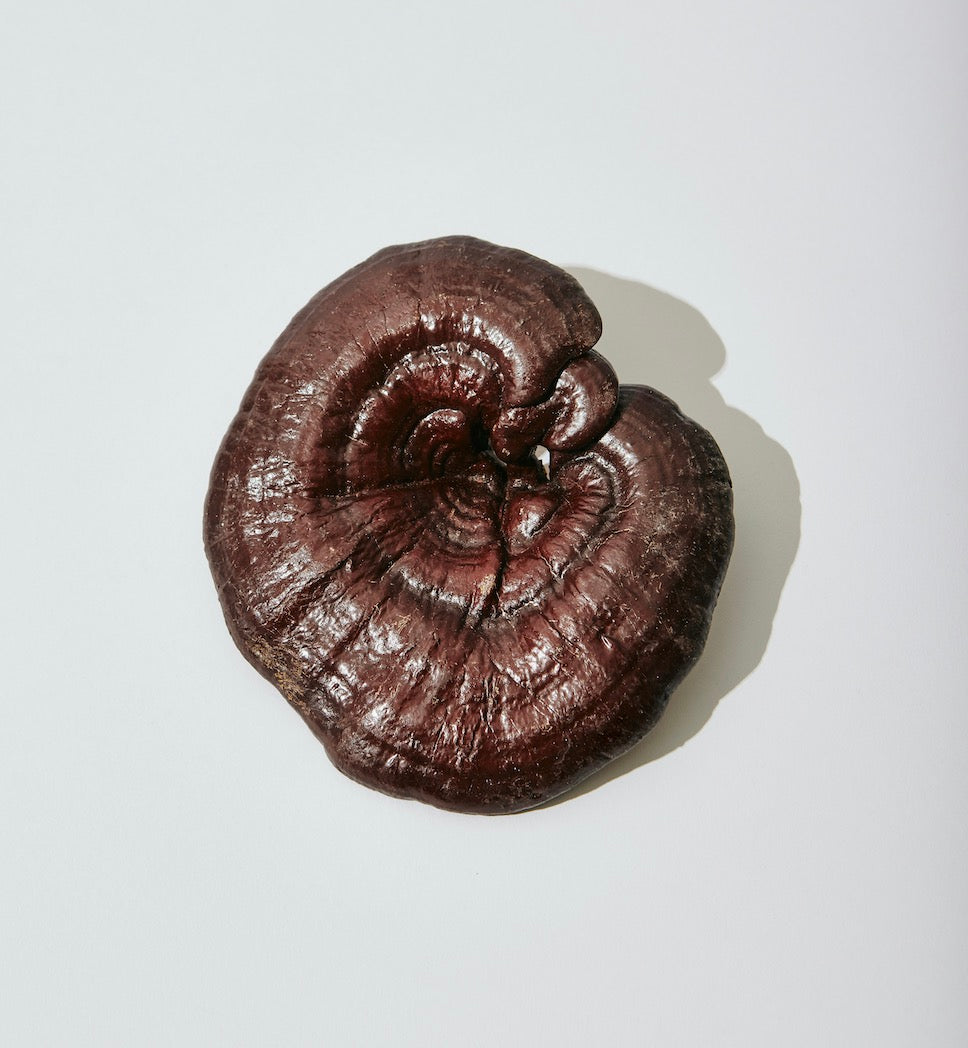
Reishi Mushroom For Liver Health
09/09/25Share
Unlocking Liver Health: How Ganoderma Sinense Mushroom Fiber Fights Fatty Liver Disease
Article Summary
Metabolic Dysfunction-Associated Steatotic Liver Disease (MASLD) is a silent epidemic linked to modern diets and lifestyles. While lifestyle changes are key, exciting research points to a powerful natural ally: a unique dietary fiber from the ancient medicinal mushroom, *Ganoderma sinense*. This guide explores the compelling science behind how this mushroom fiber, known as GSSDF, can improve liver health, modulate gut bacteria, and offer a promising natural strategy for preventing and managing fatty liver disease.
1. The Silent Epidemic: Understanding MASLD (Fatty Liver Disease)
Metabolic Dysfunction-Associated Steatotic Liver Disease, or MASLD (previously known as NAFLD), has become one of the most common chronic liver conditions worldwide. It's characterized by the accumulation of excess fat in the liver, a condition not caused by alcohol consumption. While it often begins silently, MASLD can progress to more severe inflammation (steatohepatitis), fibrosis, cirrhosis, and even liver cancer.
What drives this dangerous fat buildup? The primary culprits are modern dietary habits—specifically, high-fat, high-sugar diets. These diets contribute to a cascade of metabolic issues, including:
- Insulin Resistance: When your cells stop responding properly to insulin, your body struggles to manage blood sugar, leading to fat storage in the liver.
- Lipotoxicity: An overload of fatty acids becomes toxic to liver cells, causing cellular damage and inflammation.
- Gut Dysbiosis: An imbalance in the gut microbiome, which disrupts the crucial communication pathway between your gut and your liver.
Currently, there are no FDA-approved drugs specifically for MASLD. The cornerstone of treatment remains lifestyle modification—diet and exercise. This reality has spurred a global search for safe, effective, and natural interventions that can support liver health. This is where the potential of **Ganoderma sinense for liver health** comes into focus.

2. A Natural Solution: The Power of Ganoderma Sinense for Liver Health
*Ganoderma sinense*, a species of Lingzhi or Reishi mushroom, has been revered in traditional Chinese medicine for centuries. Modern science is now beginning to validate its therapeutic properties, particularly the benefits of its unique dietary fiber. Researchers have isolated a specific water-soluble dietary fiber from this mushroom, named **GSSDF**, and its effects on metabolic health are nothing short of remarkable.
Recent studies have demonstrated that using **Ganoderma sinense for liver health** can yield powerful protective effects. In scientific models, supplementation with GSSDF has been shown to:
- Significantly reduce body weight gain and fat accumulation.
- Lower levels of harmful cholesterol and triglycerides in the blood.
- Protect the liver from the cellular damage and inflammation caused by a high-fat diet.
- Improve glucose tolerance and insulin sensitivity.
These findings position GSSDF as a highly promising natural agent in the fight against MASLD and obesity. But how does this mushroom fiber achieve such profound effects? The answer lies in its ability to influence the intricate relationship between our gut and our liver.

3. The Gut-Liver Axis: How GSSDF Works Its Magic
The "gut-liver axis" is a term describing the two-way communication highway between your digestive system and your liver. A healthy gut microbiome is essential for a healthy liver. When the gut is out of balance (dysbiosis), harmful substances can "leak" into the bloodstream and travel to the liver, causing inflammation and damage. The fiber from **Ganoderma sinense for liver health** works by restoring this crucial balance.
Here’s how GSSDF positively influences the gut-liver axis:
- It Acts as a Prebiotic: GSSDF is not digested in the upper gut. It travels to the colon, where it serves as a food source for beneficial bacteria.
- It Restores Microbial Balance: Research shows GSSDF helps reverse the harmful changes in the gut microbiome caused by a high-fat diet. Specifically, it reduces the ratio of Firmicutes to Bacteroidetes—a marker associated with obesity—and boosts the population of beneficial bacteria like *Akkermansia*.
- It Strengthens the Gut Barrier: A healthy gut microbiome, nourished by fibers like GSSDF, helps maintain a strong intestinal wall. This prevents toxins from leaking into the bloodstream and reaching the liver, thus reducing liver inflammation.
- It Promotes Healthy Metabolism: By fostering a healthier gut environment, GSSDF indirectly supports better fat and glucose metabolism, relieving the metabolic burden on the liver.
In essence, using **Ganoderma sinense for liver health** is a gut-first approach. It corrects the root imbalances that contribute to fat accumulation in the liver, offering a holistic and powerful mechanism of action.

4. Practical Implications and the Future of Liver Health
The research into **Ganoderma sinense for liver health** opens up exciting possibilities. It points towards a future where functional foods and natural supplements play a key role in preventing and managing chronic metabolic diseases like MASLD. While more human clinical trials are needed, the evidence for GSSDF is incredibly strong.
For individuals looking to be proactive about their liver health, this research underscores the immense power of dietary fiber. While GSSDF is a uniquely potent example, the principle applies broadly: a diet rich in diverse, fermentable fibers from sources like mushrooms, vegetables, and legumes is fundamental to maintaining a healthy gut microbiome and, by extension, a healthy liver.
Looking ahead, we can anticipate more personalized approaches to health, combining AI-powered diagnostics with tailored nutritional strategies. In this new landscape, ancient remedies like the *Ganoderma* mushroom, backed by modern science, are poised to become a vital part of our wellness toolkit. As our understanding of the potent effects of **Ganoderma sinense for liver health** grows, it could become a staple recommendation for those at risk of metabolic disease.

5. Frequently Asked Questions
1. What is the best way to use Ganoderma sinense for liver health?
Currently, *Ganoderma sinense* is most commonly available as a powdered supplement or extract in capsules. It's crucial to choose a high-quality product from a reputable brand. Always consult with your healthcare provider before starting any new supplement, especially if you have a pre-existing health condition.
2. Can I get the same liver health benefits from eating other mushrooms?
While many mushrooms (like Shiitake and Maitake) contain beneficial beta-glucans and support overall health, the specific dietary fiber GSSDF is unique to *Ganoderma sinense*. The research on MASLD has focused specifically on the potent effects of using **Ganoderma sinense for liver health**.
3. How does Ganoderma sinense fiber differ from psyllium husk or other common fibers?
GSSDF is a water-soluble, fermentable fiber. Unlike insoluble fibers (like psyllium) that primarily add bulk, GSSDF is actively metabolized by gut bacteria to produce beneficial short-chain fatty acids (SCFAs), which are key to its liver-protective effects.
4. Are there any known side effects of taking Ganoderma sinense supplements?
*Ganoderma* is generally considered safe for most people when taken appropriately. Some individuals may experience mild digestive upset or dizziness. It can have blood-thinning effects, so it's essential to talk to your doctor if you are on anticoagulant medication or have a bleeding disorder.
5. How long does it take to see the benefits of Ganoderma sinense for the liver?
Nutritional interventions work gradually. While scientific studies often run for 8-12 weeks to see significant changes in biomarkers, consistent long-term use as part of a healthy lifestyle is the best approach for supporting liver health.
6. Can Ganoderma sinense help me lose weight?
By improving gut health and metabolic function, GSSDF has been shown in studies to reduce body weight gain and fat accumulation. It is a supportive tool for weight management but should be combined with a balanced diet and regular exercise.
7. What lifestyle changes are most important for treating MASLD?
The most critical changes are adopting a whole-foods diet low in sugar and processed fats (like a Mediterranean diet), engaging in regular physical activity (aiming for 150 minutes per week), and achieving a modest weight loss of 5-10% of your body weight.
8. What is the role of Akkermansia bacteria in gut and liver health?
*Akkermansia muciniphila* is a beneficial bacterium known for strengthening the gut lining. A high-fat diet often depletes its population, weakening the gut barrier. The fiber from **Ganoderma sinense for liver health** has been shown to increase *Akkermansia* levels, helping to protect the liver.
9. Can I take Ganoderma sinense if I already have cirrhosis?
If you have advanced liver disease like cirrhosis, it is absolutely essential to speak with your hepatologist or specialist before taking any supplements, including *Ganoderma sinense*. Do not self-treat advanced medical conditions.
10. Where can I find reputable scientific studies on Ganoderma sinense and liver health?
You can search for studies on academic databases like PubMed or Google Scholar using terms such as "*Ganoderma sinense*," "steatotic liver disease," "gut microbiota," and "GSSDF." This will provide you with access to the primary research.





